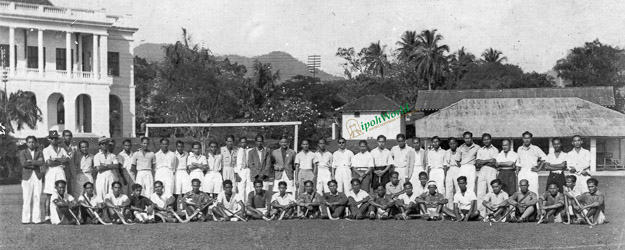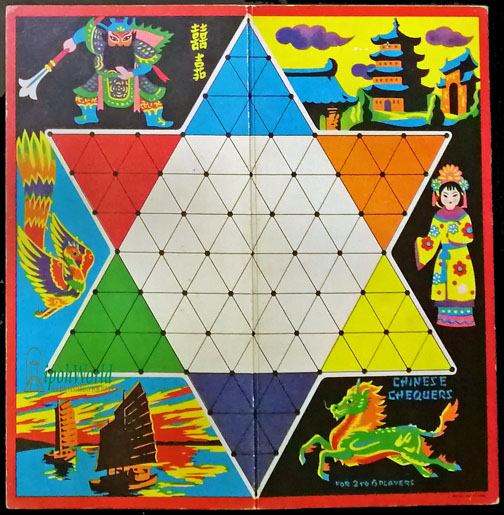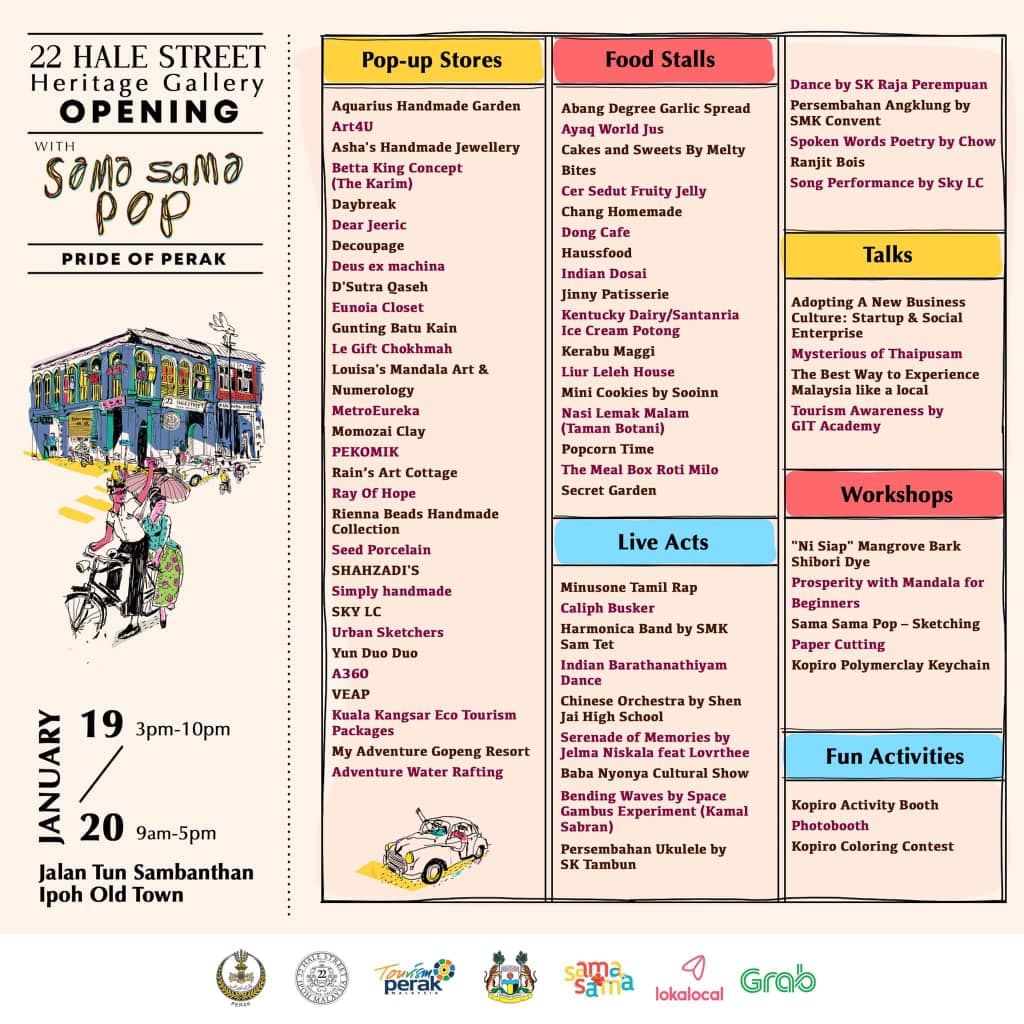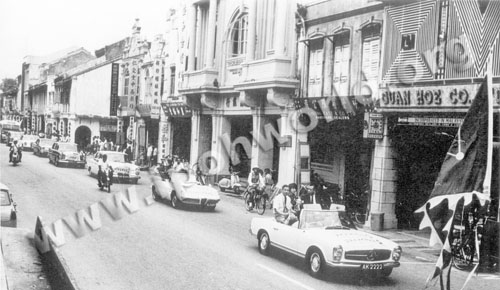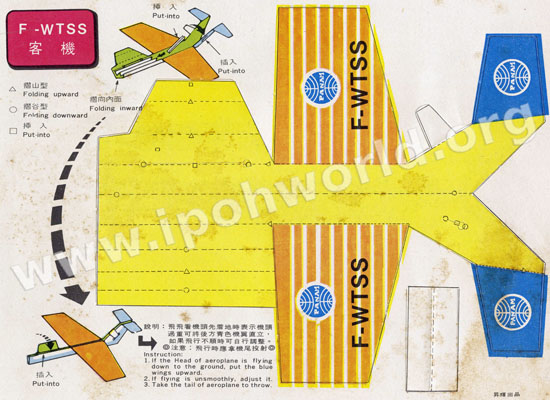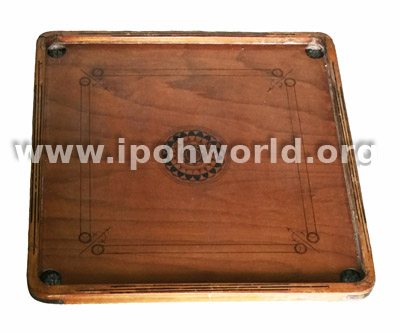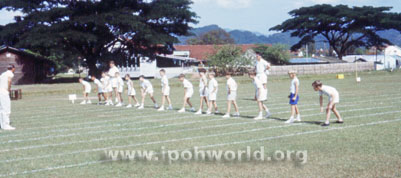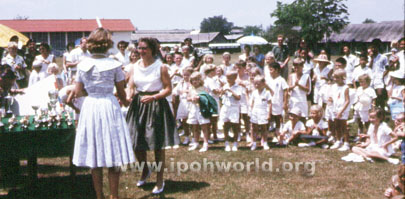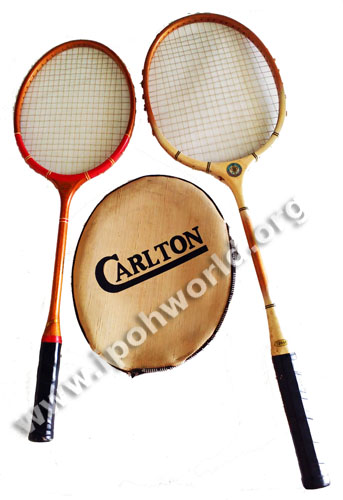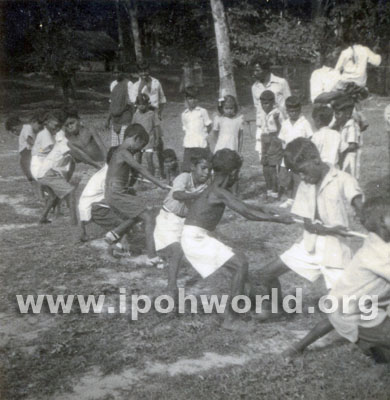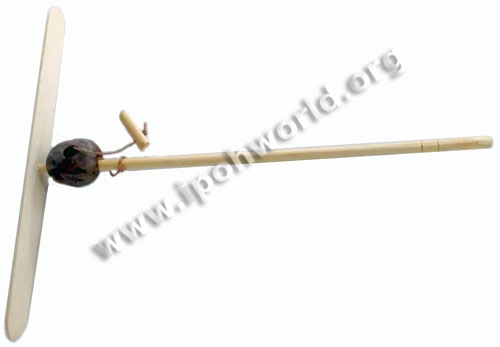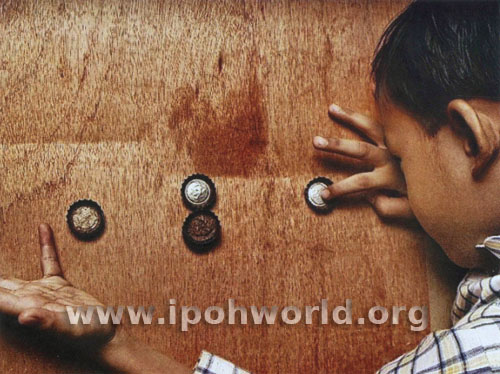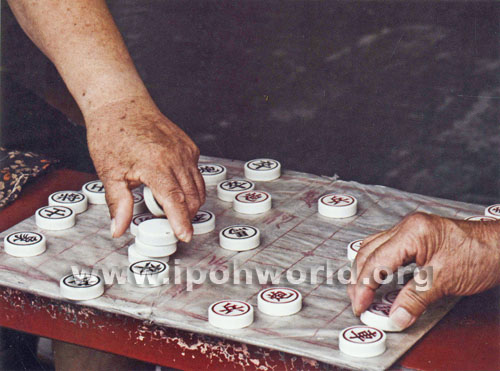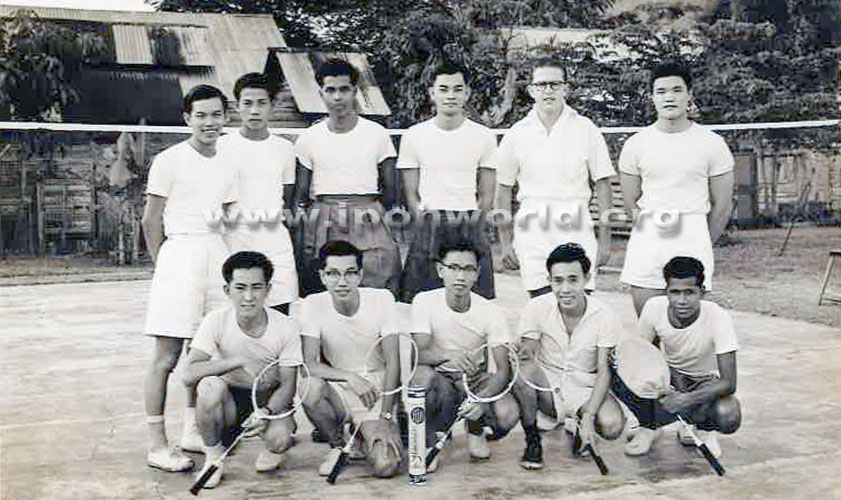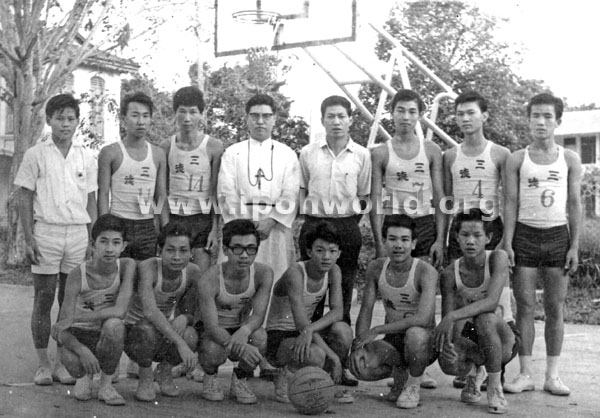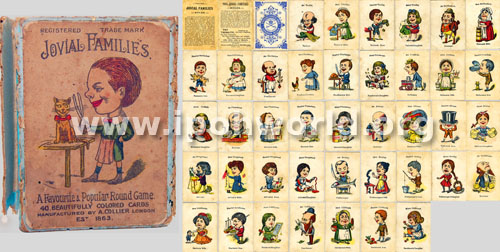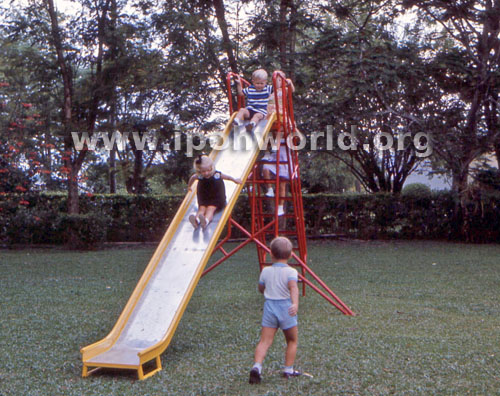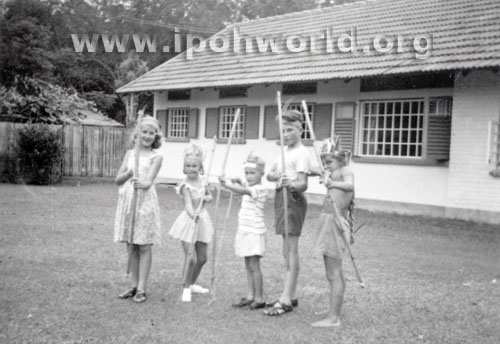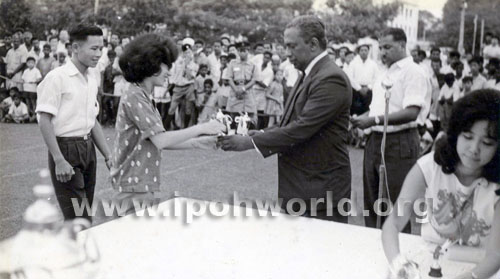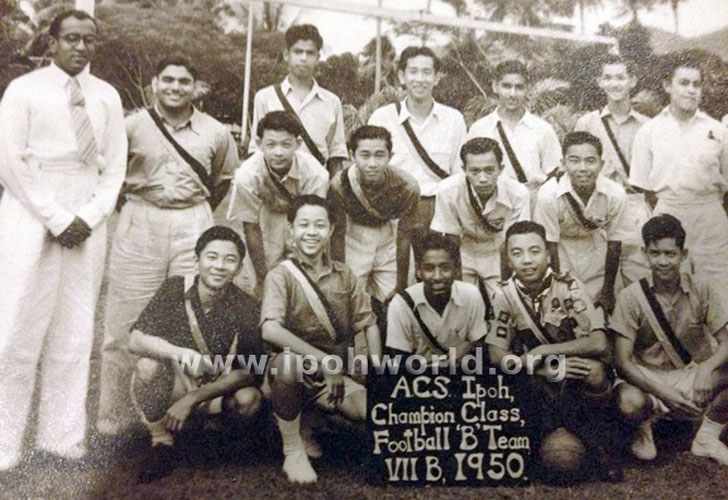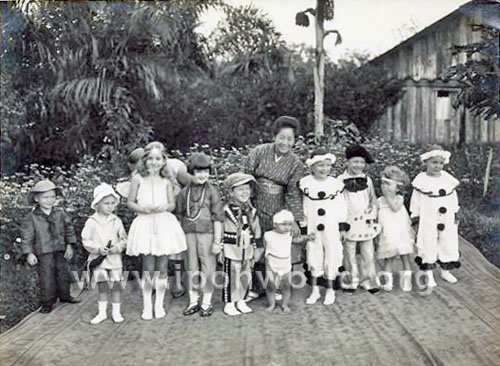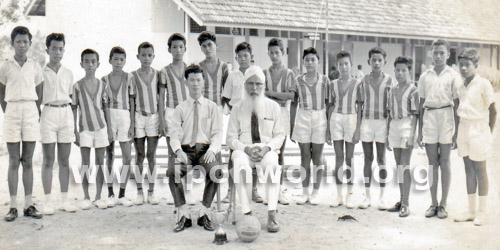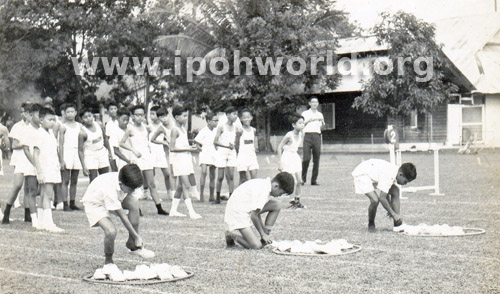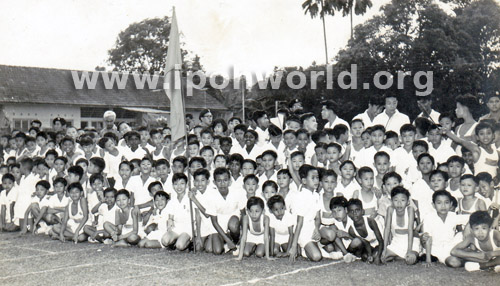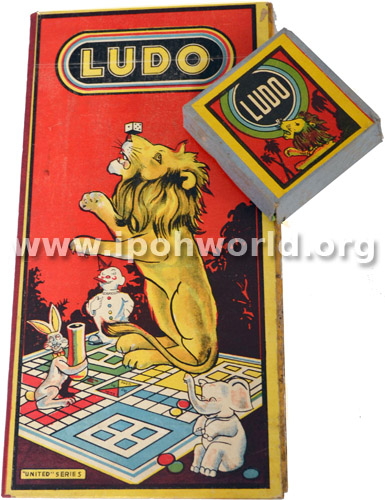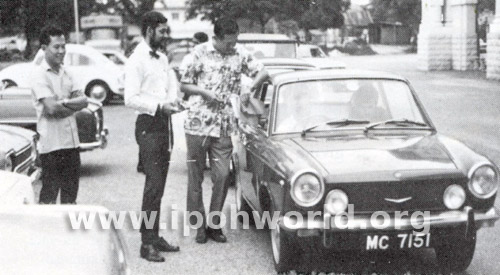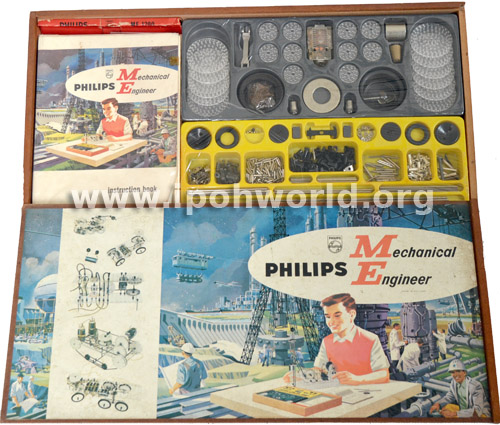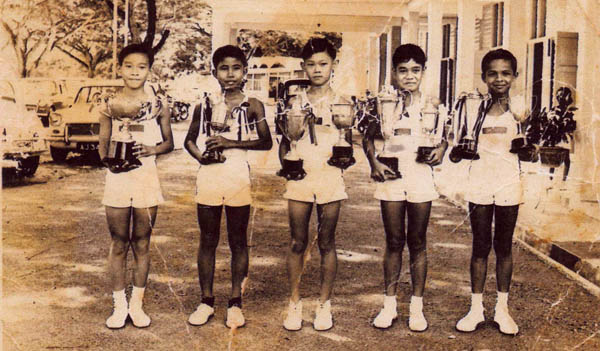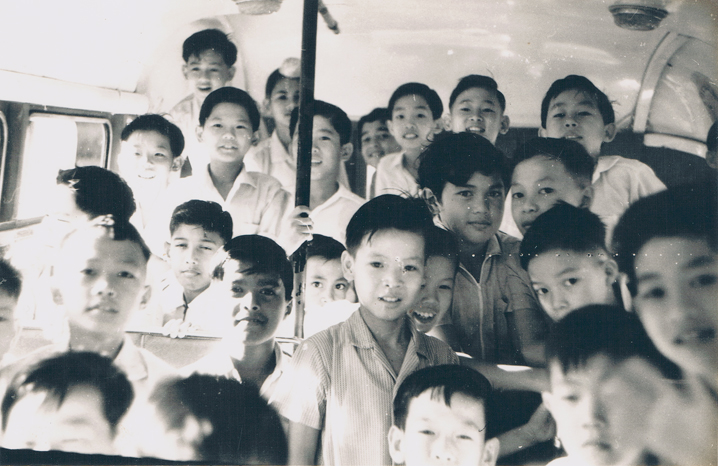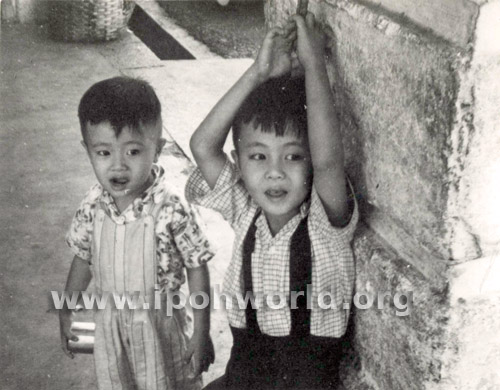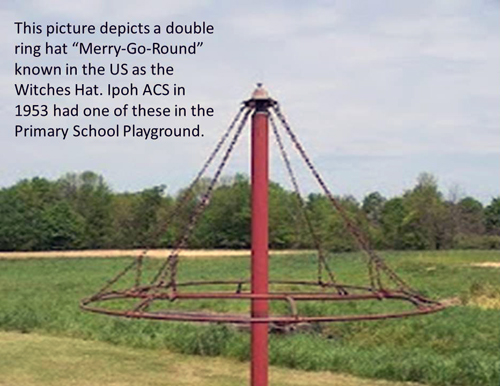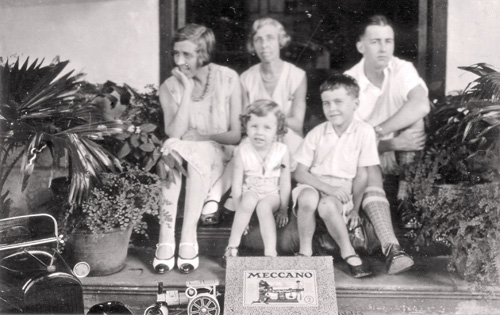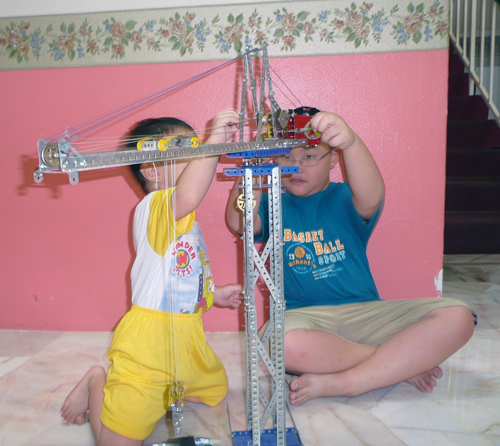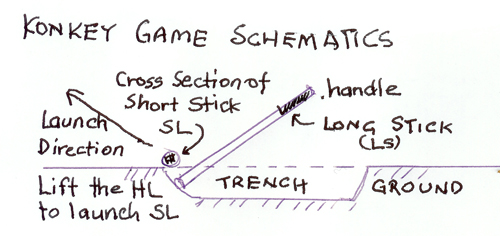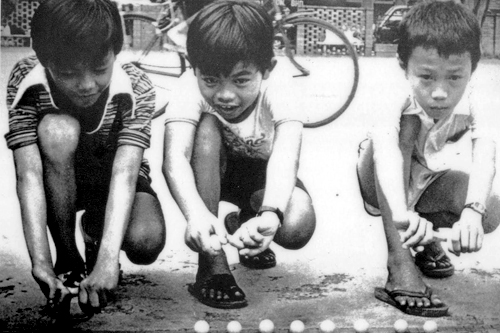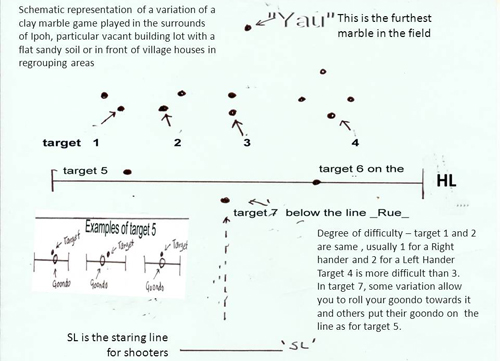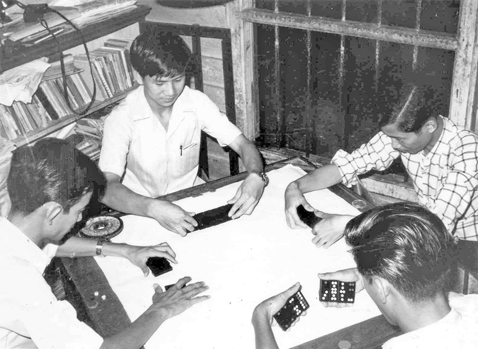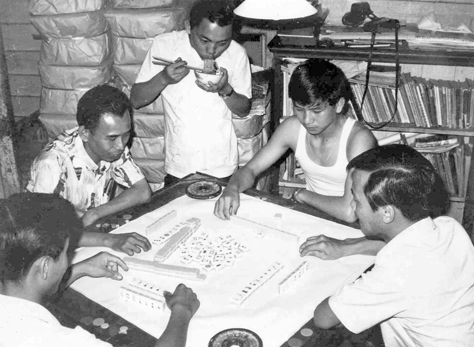January 2021
October 2020
January 2019
Sama Sama is BACK!
Don’t know what to do the coming long weekend? Well, why don’t you head on out to Ipoh Old Town. Lots of exciting events will be happening on the 19th and 20th of January 2019 – you wouldn’t want to miss it!
Curious? Want to know more? Visit the Sama Sama Perak Facebook page.
June 2018
Table Tennis Winners
Yes, those in the leading car in this parade were the Perak State Table Tennis Team. Incidentally, the team won the National Table Tennis Championship back in 1967. The winners went on parade through Hugh Low Street – passing the premises of the Oversea Chinese Banking Corporation. The President of the Perak Association, Towkay Chong Kok Lim (later Tan Sri) was said to be in the leading car. Does anyone remember this parade?
February 2018
Paper Planes
Recognise this drawing? Were you any good at it? Did you have ‘flying’ competitions with your friends? Ok, own up…how many of you played with paper planes? We’d also like to hear from the model airplane enthusiasts.
I'll admit I had paper dolls once. Spent hours designing, colouring and cutting out clothes for them ;)
September 2017
Come meet the badminton heroes!
Thanks to SK, we have the following photograph – which was taken at the BWF World Senior Badminton Championships 2017.
From left to right: Foo Lai Loon (MS 70+ ); Chan Wan Seong (MS60+); Loo Ah Hooi & Ching Kon Kong (MD70+)SK also shared the following message from Chan Wan Seong:
BWF World Senior Badminton Championships 2017 – List of Malaysian Medalists :
In MD50+, Sarawakian Ting Wei Ping ( not from BU Dragons group) & Indonesian Bobby Ertanto ( 1982 Indonesia Thomas Cup Partner of Liem Swie King) won Gold Medal.
In MD40+, Kah Kok Cheong & Lum Chee Meng ( not from our BU Dragons group) won Silver Medal.
In MS60+, Chan Wan Seong, and Ong Then Lin ( Ong is under MBA Group) won Bronze Medal.
In MS70+, Foo Lai Loon won Bronze Medal.
In MD70+, defending champions Ching Kon Kong & Loo Ah Hooi won Bronze Medal.
So Malaysia has won a total of 6 medals :
1 Gold, 1 Silver, 4 Bronze .He added:
“This is the official BWF World Senior Badminton Championships 2017 held once every 2 yrs.
In the 2015 edition, he won a Bronze Medal in MS60+ and in 2017, he won another Bronze Medal despite being 2 yrs older now and facing younger opponents who have migrated to the 60-64 years age category.”In the 2015 edition, Malaysia won only one Gold in MD70+ through Ching Kon Kong/ Loo Ah Hooi, and one Bronze in MS60+ through Chan Wan Seong.
SK would also like to extend an invitation to ALL the Andersonians
Date: 23 Sept 2017 , Saturday
Time : 12.00 pm to 4.30 p.m. Hi Tea
Venue : Swez Brasserie East In Hotel Petaling Jaya
Cost: About RM 63 for Seniors Discount.
Contact Person: Darren Teh – darrenyft77@gmail.com
ps: You’ll also have a chance to meet our badminton stars Chan Wan Seong and Loo Ah Hooi – both former Andersonians – in the flesh!
April 2017
February 2017
August 2016
June 2016
May 2016
October 2015
Sports Day at ACGS
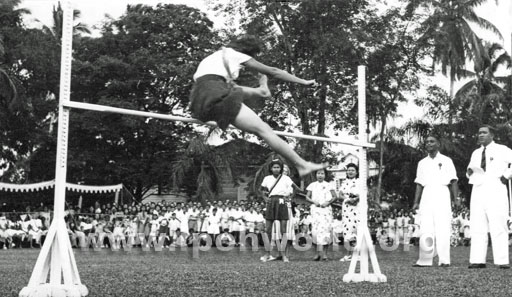 source: Janet Ferguson & Nellie Cumming
source: Janet Ferguson & Nellie Cumming
This was probably taken at a school sports day – most likely the ACGS (Anglo Chinese Girls School) Sports Day! I do wonder is the girl in the picture broke the record for the high jump event……
I vaguely remember the annual sports day at my school. But I’ll never forget the good ‘ol Milo van with the free Milo in paper cups (yummy!). What were YOUR school sports memories like?
May 2015
Bottle Caps (Ceper)
Bottle-caps or Ceper (as some call it) was quite a popular children’s game back then. I don’t know the actual rules of this game. But from what I do know, two or more players were judged by their skills at manouvering the bottle caps across a table. At the same time, they had to make sure that the caps don’t fall off.
Fancy a game of Chinese Chess?
Xiangqi is played on a board nine lines wide and ten lines long. As in the game ‘Go’, the pieces are placed on the intersections, which are known as points. The vertical lines are known as files, and the horizontal lines are known as ranks.
Centered at the first to third and eighth to tenth ranks of the board are two zones, each three points by three points, demarcated by two diagonal lines connecting opposite corners and intersecting at the center point. Each of these areas is known as gōng – a “palace” or “fortress”.
Dividing the two opposing sides, between the fifth and sixth ranks, is the “river”. The river is often marked with the phrases chǔ hé, meaning “Chu River”, and hàn jiè, meaning “Han border”, a reference to the Chu-Han War. Although the river provides a visual division between the two sides, only two pieces are affected by its presence: soldier pieces have an enhanced move after crossing the river, and elephant pieces cannot cross it. The starting points of the soldiers and cannons are usually, but not always, marked with small crosses. – extract from Wikipedia.
Here we have a picture showing a game of Xianqi or Chinese Chess in progress. Note the placement of the tokens.
For those of you who want to see a real Xianqi board, visit our exhibition at Han Chin Villa!April 2015
A Unique Badminton Team!
Here’s another blast from the past from Richard Saxey. He tells us that this is “the picture of the badminton team, showing my elder brother Mr. E.H.White (know as Mick), I cannot remember if the team was a Malim Nawar team or a Perak River Hydro team (Malim Nawar)”.
Can’t wait to hear more from the you folks – who were once part of the Perak Hydro / Malim Nawar gang!
March 2015
Did you own a MOBO?
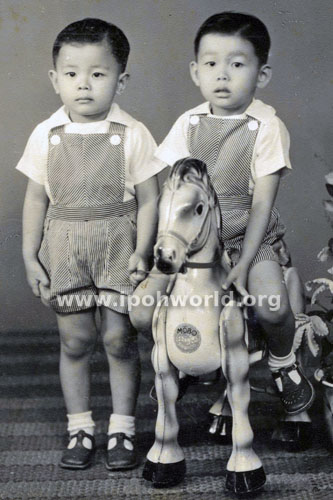 picture from: Leong Kai Loong, Ipoh
picture from: Leong Kai Loong, Ipoh
Did you own a Mobo horse when you were young? My cousins and I used to play on a Triang car – which was passed down to us from our uncles.
We had great fun with that car, pretending we were adults driving through town (but in fact, we only circled the garden!).
What were YOUR favourite toys growing up?
The Nazareth Kindergarten, 1970
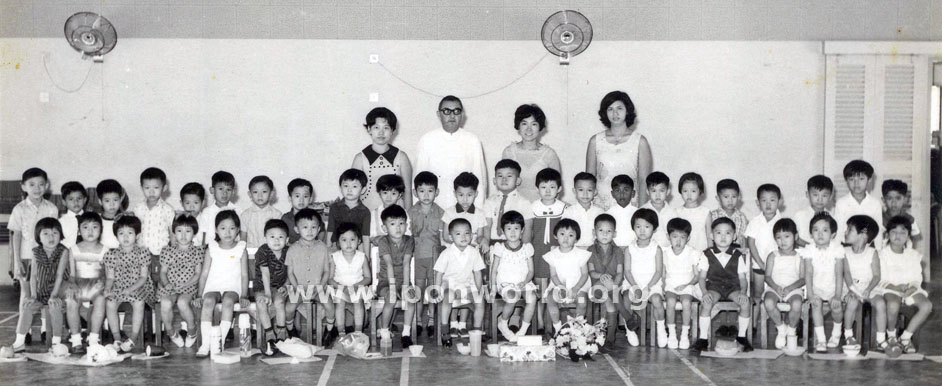 Farewell Party for Fr Ciatti, April 1970 (click to enlarge)
Farewell Party for Fr Ciatti, April 1970 (click to enlarge)
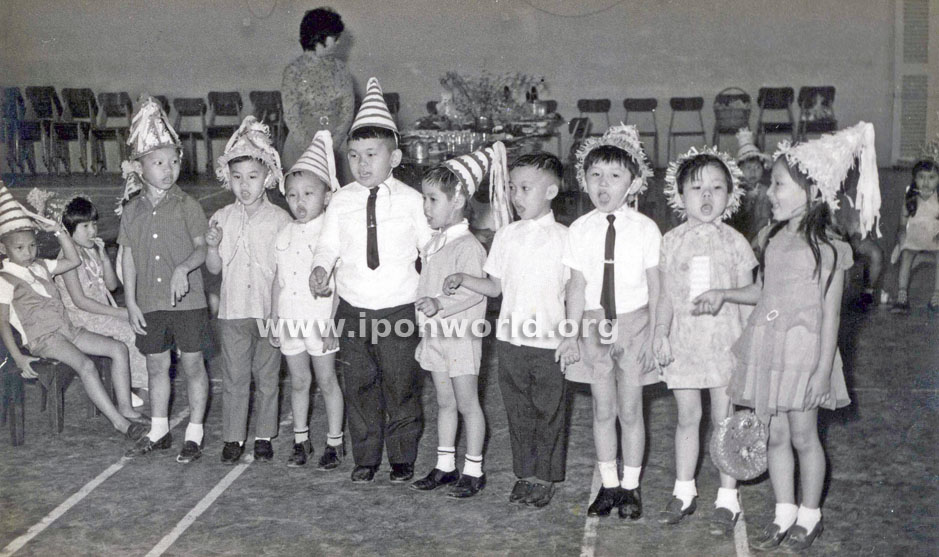 Christmas Party, Nazareth Kindergarten. Catholic Centre, Ipoh. 10th November 1970 (click to enlarge)
Christmas Party, Nazareth Kindergarten. Catholic Centre, Ipoh. 10th November 1970 (click to enlarge)
These photographs were taken from Michael Ho’s collection. It wasn’t that long ago, so I’m sure some of you might remember this kindergarten.
Today, this building is still standing….but it’s no longer the Catholic Centre; it’s now a thrift store, where most items are sold for RM 2.
February 2015
Time for some Card Games!
Have you played ‘Happy Families’? Well, this game used to be known as ‘Jovial Families’ a long time ago. Here’s a picture to refresh your memory.
From what we were told, this set was manufactured by A. Collier (which was established back in 1863, in London). I’m guessing the ‘Happy Families’ cards are now printed locally….but I could be mistaken.
August 2014
Birthday Present from F&N?
Ruth Iversen Rollitt (our donor) tells us that there was a time when F&N supplied swings and slides for birthday parties! I didn’t know this, did YOU? Did F&N bring such joy to your birthday parties? We’d like to know your favourite F&N memory 😉
If Ruth is reading this, do tell us more about this story.
June 2014
Playtime!
We received this from Ruth Iversen Rollitt. Based on previous pictures, I’m guessing that the girl on extreme left is Ruth herself.
The children seem to be playing with make-shift bows and arrows.I confess trying to make one too, when I was a kid…this was after reading about Robin Hood – The bow didn’t quite turn out so well, and the twigs I wanted to use as arrows kept breaking while I attempted to shoot them 😉
What type of make-shift ‘toys’ did YOU come up with during your childhood playtime?
May 2014
February 2014
December 2013
1964 Soccer Team
Are you in this photo? Or, perhaps you knew some of the players in this soccer team. Did any of them end up in our national football league?
If you look closely, there is a trophy at the bottom of this photo…which made me think that this was probably taken after a soccer match. I’ll leave it to you to tell me more.
We thank Zahar for this nostalgic photo 🙂
November 2013
Have you ever played ‘LUDO’?
I’ve played it before, although I rarely won (perhaps, there’s a trick in throwing the dice in order to get the right number 😉 ) Anyway, LUDO seemed like a popular board game at one time. Then there was MONOPOLY. Wonder what’s the latest popular board game today!
On that note, what was YOUR favourite board game?
Surprise!
In our previous post, we had a reply from the brother of the pretty lady sitting on the sports car. We now know her as Joan Lau. After some searching, we found a picture of Lawrence Lau (see below).
The caption for the above picture is as follows: “Adrian Boudville looking on, Barry Jansz acting as Time Keeper and Lawrence Lau acting as Starter.”
This was taken on 18th August 1971 at the Ipoh Railway Station. Anyone remember this event?
October 2013
September 2013
Now Here’s a Sight for Sore Eyes!
This great old photo came with the following message:
“Picture of me with the team 4x100m relay Cator Avenue school ipoh 1968. Hope my old friends in the picture memory of our history together.
from: Alaudin”.
So come on friends, tell which one is you. And for those not in the picture, we always love to hear more about your schooldays.
Many thamks to Alaudin for sharing.
August 2013
NTPS Pasir Puteh Take Off For Penang
Here is a bit of nostalgia if ever there was one! Sent in by Mano it is a photo taken on a bus on the way to Penang from the famed NTPS Jalan Pasir Puteh, Ipoh in 1967.
Mano tells us: At the rear is Semret Singh, SEA Games Gold medallist at the Hammer Throw in 1985 and 1989. He is the son of the equally famous Ghenda Sing (deceased) who donned the national colours for the Hammer Throw as well till he was 55!
To the left of Semret is Suhaimi who, together with his brother, formed the band Apple Jam and went on to open Ipoh’s first Discotheque – Apple Jam.
In the right half of the photo, in the middle, wearing a zippered shirt is Suhaimi’s brother, none other than Wah Idris – Musician extraodinaire from the Berkeley Scool of Music.
As for me, I’m the other Indian kid looking out the window, behind the Indian kid smiling at the camera.
Cheers to all at Ipohworld!
Thank you so much Mano – may
May 2013
Play Time!
Whether they’re quiet, noisy, cheeky, hyperactive, or even the book-worm types…..kids will always have a special place in our hearts 😉
Today, we’d like to share this photograph with you. We don’t know what these boys were up to when this was taken, but I would like to guess that they were probably playing hide-and-seek (note that both kids are behind a pillar). Notice what they’re wearing? Have children’s clothes changed much over the years. I’d say definitely…what say you?
We thank John McAuley for this lovely photograph!
June 2012
Nostalgic Flashback to Ipoh ACS – It’s 1953!
Nostalgic flash back in Ipoh ACS – The little park in the site of the current Carpentry Shed 1953
by IpohBornKid
Prior to the erection of the Carpentry Shed, there was a little park of green grass with a middle line of trees, one of which was a frangipani tree of nearly 12 feet tall. The park was bounded by a bamboo plant fence parallel to Lahat Road, the main entry road to the Ipoh Anglo-Chinese School (ACS) Main Building, the impenetrable fence (south) and a deep grassed slope (west). On top of this slope was a School Residence (see illustration above). From the park looking towards Lahat Road, you can see the Hindu Temple.
Some students waited in the park to be picked by private transport. Many activities occurred in that area within a space of 30 mins after school.
When a piece of leaf from the palm tree was found, it was everyone’s favourite to do “bob sledging” down the steep slope. You climbed to the flat top, position your bum on the end of the wide leaf (bark side), move it on the edge of the slope, and with one shove, you make a quick descent to the bottom of the slope. It was a cheap thrill. Sometimes, your pants could be severely stained if you accidently slide off the leaf and continue downwards without it or you simply fell off.
The frangipani was a source of entertainment and prankish behaviour. One day, whilst I was sitting under the tree for shade and was waiting to be picked up,I felt something wet dripping on my head. My hand reached for the spot and felt wetness. I inspected my fingers and found the wetness was caused by a sticky white liquid. At first, I thought it was bird shit but the consistency and the smell (rather sweetly) eliminated my first guess. On looking up the tree, I discovered that the latex from the tree was dripping on my head. What a sigh of relief because if that was bird poo, it was considered unlucky and to reverse the curse, I would have to buy lollies and shared it with my friends. However, I did remember seeing someone known to me, had climbed up the tree as I was sitting down. He had cut the bark of the tree (or carved a grove in the bark similar to tapping rubber). The latex then flowed to the opening and when it accumulated, gravity did the rest. It was the “dripping latex on your head” trick. I had a fight with him then but we remained friends.
After learning the trick from him, I was able to do it to another person. You climbed up the tree and waited for the next victim to sit in the spot where the cut in the tree would result in the latex falling into his head or body. All you need is a good pen knife. All bad things can be learnt from ACS boys if you are willing to learn.
The little park is only second to the ground below the gymnasium for fighting. Many scores were settled in the park after school. It was a good place because the teachers were busy preparing to go home in the teacher’s office and the park was unsupervised. I had cut lips, sore arms and black eyes during my early primary years. As a young boy with classmates 2 years older and bigger, you need to defend yourself when they dislike you being more intelligent than them or you being the teacher’s pet. Or they were just bullies. Once you have established that you can fight back and not necessarily win the fight, you have gained their respect and they will not touch you again. The motto “I can bleed all over you” .was a principle that we smaller beings lived by in ACS. Despite these fights, we were all friends in the later years and we seem to have forgotten our past disagreements.
My maternal uncle attended the afternoon school in ACS called the Methodist Afternoon School (MAS) with Mr Wong Wai Lam as the Principal. He parked my Grandfather’s green Vauxhall near the little park and he had the driver’s window wound down so I could use the horn to summon support if the boys tried to wallop me. His classroom was in the Main Building where he could see the car from where he sat. Fortunately, I did not use his service because I was able to take care of myself.
The ice-cendol Indian man always came and parked his tricycle store in the front lawn between Lahat Road and the bamboo fence. If I had 10 sen in my pocket, I would also get a bowl of ice cold cendol. Very tasty and when I think of it, my mouth watered. As boys we were curious to investigate whether there is any truth in the matter about earthworms at the bottom of the cendol pot. The Indian man obliged us by scooping out the green cendolwith his large spoon and declared “see, no earthworms”. We were satisfied. I found out the truth whilst I was overseas when the discussion of the earthworms in the cendol pot started again. Yes, there were earthworms but they were carefully wrapped in a white piece of cloth and it sat on the bottom of the pot. Some said that it reduced the chances of the coconut oil in the coconut juice turning rancid, ie an anti-oxidant. Believe it or not!
One last comment on the bamboo fence – there were no fighting spiders living there but you can make a single note flute by pulling a young shoot of the bamboo and pulling other joints out and use the one part with a leafy stem. You can make a single note by either blowing into it or sucking it. Another old ACS boy trick.
I believe the fence on the south boundary did have some spiders (fighting ones). True or False?
P/S Does anyone remember the rabbits that were kept at Horley Hall, adjacent to the railway line?
Playtime!
In a previous blog, we featured an ‘old’ merry-go-round. Well, here is what a see-saw looked like back in the 50s.
This picture (sent a long time ago) is from Anne and Dennis Marsden of the UK. It was taken at a Christmas Party at an orphanage somewhere in Ipoh.
Awesome Playground Equipment found in Ipoh ACS 1953
The Americans termed it “The Witches Hat” by IpohBornKid
Introductory quote from:http://tstbob.blogspot.com.au/2009/12/walk-down-memory-lane-to-dangerous.html
“No; I’m not talking about those sterile plastic lysol-sprayed hunks of crap nestled in a bed of rubbery soft nerfy flooring. I’m talking aboutreal playgrounds. The kind we grew up with, the kind that mangled us and taught us life lessons. Playgrounds deemed too dangerous for today’s wussy youth, which sadly have become a thing of the past.”
The most awesome contraption in the ACS Ipoh primary school playground was the carousel-like equipment and in the US, it has the name “Witches Hat”. It was located adjacent to the monkey bars in the Primary School (Heritage) building in the 1950s. The equipment was built up of 2 circular metal rings (diameter 4 metres) welded together by 400 cm straight metal bars which gave 8 slots. The welded circular bands were suspended by metal rods/or chains (6-8 of them) to a central iron pole which lifted it to about 1 metre above ground but not too high so that a young boy of six can jump up a bit and grab the bottom circular ring . The design was very similar to the one illustrated in the picture above.
There were two possible motions of the witches hat. It can rotate horizontally with the axle represented by the large iron pole and it also swing (yaw) from side to side. The angle of the swing was about 45 degrees and this maximum was reached when the circular ring touched the central pole.
To get on the witches hat, one had to jump a little bit to grab the lower ring. The next step was to grab the upper ring. With your hands firmly on the upper ring, you lifted your body up and move one of your foot in between the two rings. With both legs in, you were then able to sit on the lower ring and your two hands holding the upper rings tightly. Not long after you have settled in, the boys on the ground will rotate the ring and if you did not hold tight, you will be thrown off by the centripetal force to the ground and be injured.
For the more experience boys, they can do two things. First, they could stand up on the lower or upper ring with their hands holding the suspending chain.At the same time, they could also swing the ring (yawing motion) and tried to hit the axle pole thus making a clanking noise. Just imagine the horror when you were a novice on the ring. The rotating ring would tried to throw you off whilst the swingding action would pulverise your legs. Whilst the ring was swinging, you had better get off or you stand on the rings.
Secondly, as the ring rotated, boys can be seen hooking their legs at the bottom ring (like the trapeze in a circus) and loved the thrill of being swung around with their face outside the rings and arms hanging down.
The witches hat was not designed for swinging and yet ACS boys found a way to intimidate younger novice on the witches hat by frightening them off the ring. Hence, swinging violently and increased velocity of the spins was a way of the “king” of the witches hat.
I fell off a few times when the violent swings and rotation started. If I had remained, I would have injured myself. Six months later, I was standing with the “kings” defying their attempts to throw me off.
An American experience is very similar to those experience in Ipoh ACS:
The idea behind these was simple – you and a friend (or multiple friends) grabbed opposite ends of the ring and ran in the same direction until you got whipped off the ground. Of course, that would be too easy; so instead you always tried to pair up people of very different sizes for each side, so it would be off balance and one side would be flown up in the air from the other people’s weight. Another important lesson in physics; often followed by a lesson in first aid.
Looking back, the witches hat was quite tough playground equipment. It looked innocent enough but it was not. It took courage and determination to stand up in the ring and most of the time, the bigger boys controlled the motion of the ring. That was rough and tough ACS playground equipment. Today, I still maintain that the witches hat was an awesome piece of playground equipment which was not designed for duels of supremacy but ACS boys found a way to make it more interesting. It was almost a jungle then – survival of the fittest. Lastly, it is definitely an American import since ACS was founded by American missionaries.
May 2012
‘Our Toys’
We have here Nigel Jennings, together with Cedric, Harold, his mother and aunt.
What we’d like to draw your attention to are the toys at the bottom of this picture! Notice the pedal-car, the steam engine and the Meccano set 🙂
I confess to having played with a pedal-car in my younger days; what was YOUR childhood like?
We thank Nicholas Jennings for this lovely picture.
Aaron Ong sent us this photo and said:
“Just want to show you pictures of a model tower crane I made with Meccano. Those are my kids beside the model.
The boom of this particular model tower can swivel via a manual hand crank, and the trolley (with the yellow wheels) can traverse (run along the boom).
The hook is a heavy lead hook with quadruple pulley system to engage heavy loads and can be actuated via electric motor with reduction gear, (the red box at the other end of the boom).
While kids these days have loads of virtual fun with their ipads and computers I too had loads of real fun with my meccano, besides honing my engineering skills.”
Thanks Aaron.
Anyone for Konkey?
The Konkey Game played in Ipoh & Surrounds
By IpohBornKid
Introduction: When the X generation was growing up, they did not have affluent parents who would buy them toys, hi-fi sets or computer games. They relied on their ingenuity and played games that cost nothing. These games were usually played in the open air about 3 pm onwards when the sun was not so hot and the breeze was blowing. In the weekends, it was played in the morning until 11 am and later in the afternoon.
In those days, there were abundant flat sandy soil or grass covered areas in vacant building lots and the compounds of the village houses. Children whose neighbours (aged between 6-12) were played together and they developed a strong bond among themselves. They grew up together and as they matured into adolescence, another generation of young kids took their place. It was healthy outdoor exercise and the parents were never worried about what their children were up to because they played with the children of their friends or neighbours.
The Game: The “Konkey” (name derived from English word “Donkey”) game is a team game similar to cricket. Instead of bat and ball, it has two sticks, diameter around 2.5 cm or less, and the long stick (LS) is about 50 cm in length with the short stick (SS) about one third of its length. The LS is equivalent to the bat and the SS is equivalent to the ball. In cricket, the ball is bowled by the bowler and the batsman defends his stumps with his bat. Similarly, in the Konkey game, the opening player launches his SS with his LS from a trench in the ground and he defends his trench with his LS.
Before the Konkey game starts, a trench is dug on the ground about 20 cm long, 5 cm wide tapering on the ends, and about 4 cm deep. Two sticks as described above are used as bat (LS) and ball (SS). The SS is placed on the ground across the trench and is launched by the LS. The most effective way to launch is to place the LS in near the front of the trench and below the SS. You can change the angle of launch by moving the LS left or right. Usually most launches are perpendicular to the SS. Pushing the LS into the ground, the launcher lifts his LS and propels the SS up in the air. This is called launching the SS (ball). Please refer to schematic diagram.
The game begins after two teamsare selected and a toss to see which team launches (bat) first. The launch team stay behind the trench and the field team spreads out in the field and strategically position themselves to catch the SS.
The first player in the launch team prepares himself to launch the SS with his LS, The launcher lifts theSS in the air and generally puts it in a direction where there is no field player to catch it. When the SS is caught by a field player, the launcher is out and the next launcher in the team takes his place. The team is all out when they have exhausted the launcher (all bowled out) and the points are totalled.. (See point scoring next). If the score is less than 100, the team change sides and the field team become the launchers.
\When the field players failed to catch the SS, it falls on the ground. At this stage, a field player will pick up the SS and attempts to throw the SS back into the trench (trying to hit the stumps) with the launcher defending the trench (like a batsman) with his LS. He can whack the SS stick whilst it is still in the air. The field player can try to catch it. If they did, the launcher is out. If not, the distance between the position of the LS and the trench forms the basis of points scoring. Using LS as a measuring rod, the launcher scores one point for each length of the LS measured. The score is cumulative for the team.
If the first measure is not taken,the launcher can ask for second throw. This is only safe when the SS is a considerable distance from the trench. The rule for the second throw is the same as the first throw. If on the second throw, the SS is caught, the launcher is out. If SS is falls on the ground, the distance between the SS and the trench is the basis of point scoring but this time, the SS is used as a measure. Hence, on the second throw, the point score tripled (since one LS is 3x the length of SS).
On reaching a 100 points, (arbitrarily agreed target points), the launcher team wins the game. However if all the launchers are out and the score is below 100, the team changes sides and the game starts again.
The penalty part of the game varies from village to village, town to town. In one version, the winning team player holds the SS in one hand, drops the SS and whack it with the LS held by the other hand. One of the player in the losing team then picks up the SS in his hand and runs towards the trench. As he is running, he has to say “Konkey, konkey, etc. all the way to the trench whilst the winner player gently whack his bum with the LS, After the penalty, the game starts again,
April 2012
The Game of Marbles as Played in Ipoh & Surrounds c1950s
As we do not have any photos of Ipoh youngsters playing marbles to illustrate the following text from ipohbornkid, I have used this one courtesy of wwwyeohongeng.blogspot.com. Perhaps some of our readers can help us out with similar photos from Ipoh or Perak. And how about some stories about other childhood games please.
Definitions
Marbles – made of clay and fired in an oven with average diameter of 2-2.5 cm. Average cost 12 marbles/10 cents
Glass marbles – made of glass and with cat eye inside win average diameter 1.2 cm-1.5cm. Cost 20 marbles/10 cents.
Goondo – Your top shooting marble usually twice the diameter of your ordinary marbles.
HL- A longer horizontal line drawn in the sand with a stick. Usually, HL is drawn parallel to a wall in front of it so the marbles cannot travel too far.
SL – The starting line where all players shoot with their goondos. The SL is about 1 metre away from the HL and parallel to it.
TM – Targetmarble. This marble is nominated by other players (in a consensual way) for the shooter. It is the targeted marble and you need to hit it to win.
Shooter – A player who is allocated the chance to shoot his goondo towards target marble.
In this article, the game involving horizontal lines game with HL & SL, is described.
HL game – The HL line, about a metre long, is drawn on the sand and is closed by two vertical lines at the ends. Another shorter line is drawn about a metre down from the HL and is the starting line where the shooter’s foot should not cross.
The game starts when each player puts in one marble into the pool and each player has a “goondo” (slightly larger than the pool marble) but it is his top shooting marble.
This is followed by a group determination of the order of player’s turn to shoot. The first shooter then takes all the pooled marbles and placed in the palm of one hand, kneels with one foot and places his front foot behind the SL. He then throws the marbles with the aim to get a good spread of marbles above the HL. Marbles straying out of the boundary defined by HL vertical lines is re-launched singularly.Some marbles may fall behind the HL. When the launch is complete, the other players get together and make a decision about the target marble and the shooter has to strike that nominatedtarget marble) with his goondo to win the pot. Sometimes, the use of a small marble is allowed. However there are complicated rules to observe before he can win the pot. On striking thetarget marble with his goondo, the main rule states that there shall be no collision with any marbles in the pool by either the goondo or the target marble. A penalty is applied and when that happens, the player pays a penalty of one marble and loses his turn to shoot. If he wins the pool he continues to be the shooter.The game continues then with the next shooter after a penalty is paid.
Tactical hint: The target marble is chosen by the other players and usually has a high degree of difficulty in avoiding the penalty. You will be surprised who much Physics can be applied in this game. Seasoned players intuitively know the angle of attack and can predict which direction the marbles can go (just like shooting pool). Hence, the shooter has to decide the launch direction of his goondo (using his left or right hand and stretching his arm to form a wider angle of attack; the elevation of launch is another factor whether it is necessary to hit the target marble from the top. Finally, the force applied (the inertia) for the launch is an important factor. In summary, the direction, height and force of the launch is calculated in your brain and this information is transmitted to the arm as instructions for the required trajectory.. So, don’t for one minute think that those boys playing marbles all the time are not academically inclined but they are a bunch of de facto little scientists calculating complex equations forthe required trajectory.
The naming of the target marbles can have their roots in Malay and English languages. For example the word “Yau” (Malay – Jual, pardon my Bahasa) describes the target farthest from the HL. For younger players this is a difficult task because of the distance and the power of the shooter’s trajectory.
The targetmarble that fell below the HL is usually called “rue” (English “roll”). A target marble can also be sitting on the line. In these types of targets, you will have to “roll” your goondo and hit the target. If the shooter rolls his goondo and collided with the target marble, he wins the pool when the collided marbles do not cross the HL. It can sit on the line. When either marbles cross over the HL or hit another marble in the pool, the shooter incurs a penalty of one marble and loses his turn.
The game becomes more interesting when the target marble is slightly positioned above the HL. The opponents can then place one goondo on the line but not touching the target marble. To win this game, you need to strike the target marble without colliding with the opponent’s goondo on the HL and other marbles in thepool. When the target marble is slightly above the HL, the opponent can put his goondo on the line without touching the targeted marble. Thus the goondo can be placed just in front of the target marble or adjacent (left or right) of the target marble. The shooter has to strike that marble without hitting the opposition goondo and not colliding with any other marbles in the pool.
There are other difficult targets to shoot at. For example, when two marbles on the ground are vertically aligned or closed to each other, the marble nearest to the shooter becomes a difficult target. Under the circumstances, it is highly probable that the target marble would collide with the marble in front of it.
The winner can take home 30-40 marbles in a game. If you do not have a pouch, you will damage your pockets as they are heavy. Many trouser pockets were damaged by holding too heavy winnings.
There is second variation to this marble game where a circle is drawn in the sand. There is also a third game where players chase each other’s marbles.I would like readers to fill in these variations with their memories and also comment on the major marble game.
Spinning top game is very rich in language especially in Bahasa. There are also complex rules and Bahasa phrases to learn when you want to play spinning tops with a circle drawn the sand . The game of “Konkey” (English – Donkey) was played with long and short sticks. This was a popular game then in 1950s. The game of Bat and Ball required an empty lot among residential houses.
The reasons for the wide popularity of these games in the 1950s were the availability of sandy patches of land (or vacant land) surrounding residential houses (particularly in the new villages), it did not cost heaps of money and you have no shortage of players.
Indoor Games
Remember these tiles and the hours of fun you could have with them? It is believed that this game originated in China, during the 12th Century. In the early 18th Century, it was introduced in Italy and eventually the rest of Europe became engrossed in the game. Dominoes are played today all over the world – there are also annual tournaments held in certain countries too!
This game needs NO introduction! I was told that playing this is almost similar to Gin (but I stand corrected, since I’ve never played Mahjong before). What kind of indoor games did YOU play?
We thank Thomas Lee for these lovely pictures 🙂


